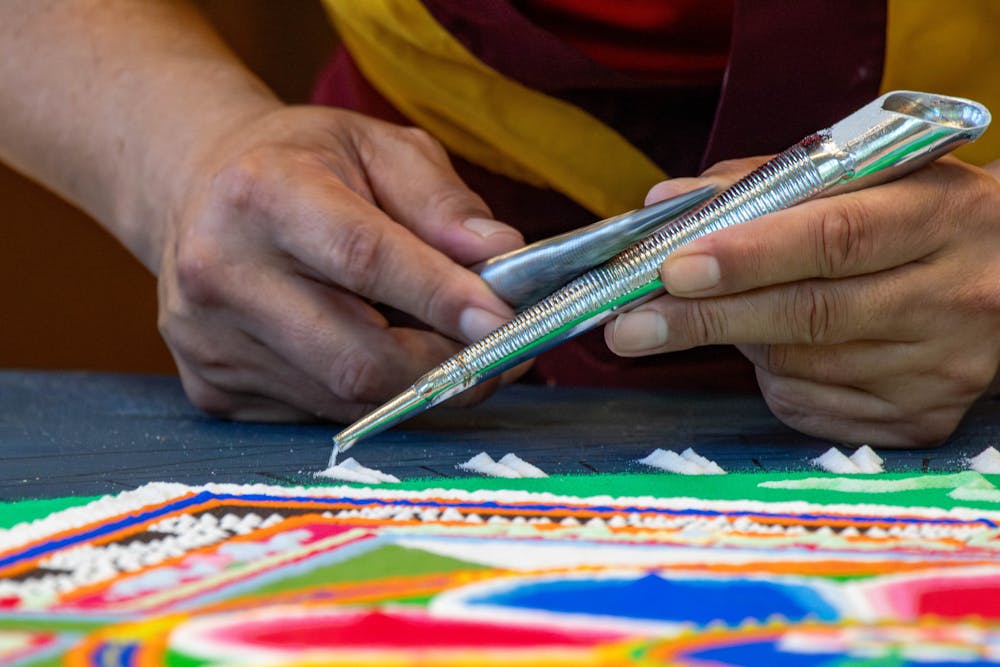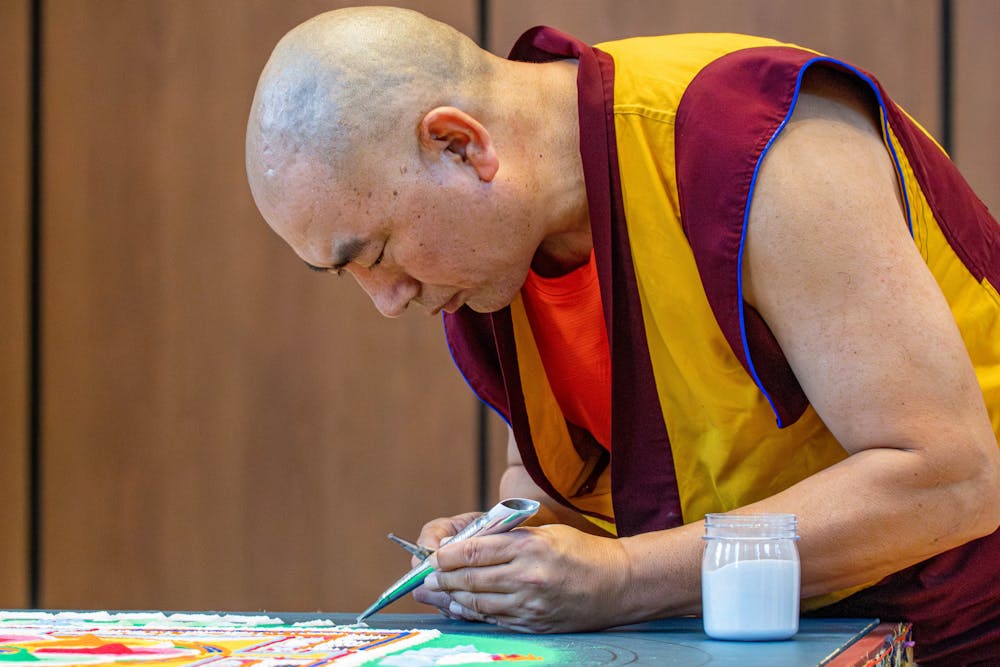Updated as of 2:34 p.m. Sept. 14 to include video.
Elise Strevel, outreach coordinator of the Kadampa Center, said she struggled early on in life to find a religion and purpose that was right for her.
Growing up Roman Catholic, Strevel attended religious institutions and went to church every Sunday. While she said she was thankful for her upbringing and her religious foundations, Strevel knew Roman Catholicism was not fit for her.
Finding Buddhism for Strevel was a “long journey” of trying many different kinds of faiths and religions.
A couple years after Strevel moved to Raleigh in 2000, she attended a presentation with Robert Thurman, an American Buddhist author, where she discovered she felt “instantly peaceful.”
“In the first prayer I ever heard, the first line was the definition of love, and for me it just clicked,” said Strevel. “It said may all sentient beings have happiness and the causes of happiness and from then on I was able to further question what happiness looked like for myself.”

A wide shot of Tibetan Buddhist monk Geshe Sangpo's Green Tara sand mandala in Numen Lumen Sept. 7.
Tibetan Buddhist monk Geshe Sangpo of the Kadampa Center joined Elon University for three days from Sept. 6 to 8 to create a Green Tara Sand Mandala — only to destroy the piece after completion. This was Sangpo’s 11th creation on Elon’s campus. To create the artwork, Sangpo used finely-ground, colored marble to design intricate shapes and symbols.
According to Strevel, creating the Green Tara sand mandala is all about imposing feelings of happiness and peace and further analyzing what each emotion means.
According to the Kadampa Center, the Green Tara sand mandala is created for compassion and peace. The sand mandala specifically is an ancient form of Tibetan Buddhist art and represents the wholeness and harmony of the universe. The act of destroying it represents the universe’s state of impermanence.
Junior and multifaith intern Morgan Williams was one of multiple students to visit Numen Lumen and observe Sangpo. Williams said she was excited to experience her own state of relaxation and peace.
“The creation and destruction is really like a form of healing as you let go of ego and you learn not to hold on to things,” Williams said.
Green Tara is a female Buddha of Compassion and Peace. In Buddhism, one can turn to the Green Tara to eliminate fear and remove suffering, disease or danger.
Interim Assistant Dean of Multifaith Engagement Hillary Zaken said it is important to hold multicultural and multifaith events on campus to remind the community to put good intentions into the world.
“When Geshe Sangpo creates this mandala, he directs his energy into it and the intentions are all around positivity and healing and peace,” Zaken said. “One thing I really love about the Truitt Center is that through the programs that we put on, you can get a little bit of a glimpse into what brings meaning to someone else.”
The sand mandala is composed of many different colors and symbols all representing different ideals. These symbols come from the eight auspicious symbols of Buddhism.

Tibetan Buddhist monk Geshe Sangpo carefully constructs his Green Tara sand mandala Sept. 7 using finely-ground, colored marble to design intricate shapes and symbols.
Within Sangpo’s mandala sat a jeweled parasol, which took the form of an umbrella, and is used as a form of protection from dangerous aspects of life.
Other symbols found in the sand mandala included the lotus, representing purity and renunciation, and the eight-spoked wheel for scriptures and teachings.
To conclude the three-day ceremony, Sangpo swept away the remains of the sand mandala to symbolize impermanence. He started with a melodic prayer and then collected sand from the artwork to spread across a body of water and recycle into the earth’s atmosphere.
Strevel concluded the ceremony by encouraging the Elon community to spread their positive thoughts and energy.
“You have all brought with you a little piece of positive energy,” Strevel said. “And now we are able to leave with the collective energy we’ve all created.”


